How to Pasteurize Eggs Sous Vide (Step by Step Directions)
A step-by-step guide to how to pasteurize eggs sous vide at home. It’s safe and way easier than you think.
Some of the most delectable recipes on the planet use an ingredient that can lead to your worst health nightmare: raw egg. In this article, we’ll explore the safe and cost-effective way to incorporate raw eggs into your cooking.
Raw Eggs in Cooking
Raw egg yolk or raw egg whites are vital for creating the texture and richness of some dishes that are cooked only lightly or not cooked at all. Raw egg forms the velvety texture of tiramisu, meringue, and buttercream icing, the creamy richness of aioli, Caesar salad dressing, homemade mayonnaise, and hollandaise sauce. It also creates award-winning froth on cocktails.
However, raw egg yolks are also a hotspot for harmful pathogens to grow—such as Listeria or Salmonella bacteria. Ingesting raw eggs can send you to the hospital with terrible food poisoning. It’s why your mom pleaded with you not to sneak raw cookie dough as a kid, and why I worry about my toddler (who’s going through a fridge exploration phase) getting near an uncooked egg.
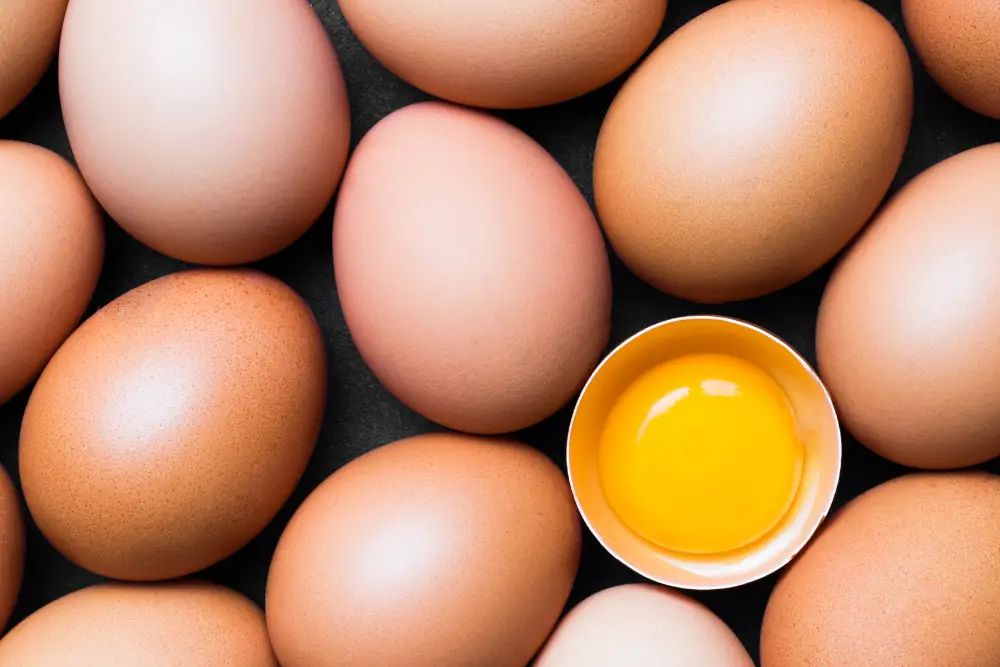
While raw egg yolks tend to be in the food-borne illness spotlight, raw egg whites can also harbor Salmonella bacteria. At the same time, there’s no direct raw egg substitute that can quite nail the same texture or richness raw egg recipes intend.
So, what can you do? There is a solution to the food safety concerns of cooking with raw eggs that won’t compromise the taste or texture of your recipes, and that’s to pasteurize your eggs sous vide at home.
As a bonus, you’ll save yourself a few dollars and a potential wild goose chase, since pasteurized eggs can be expensive and may not always be easy to find in grocery stores.
Here’s why pasteurized eggs are safe to use in uncooked recipes and everything you need to know to pasteurize safely at home.
What Are Pasteurized Eggs?
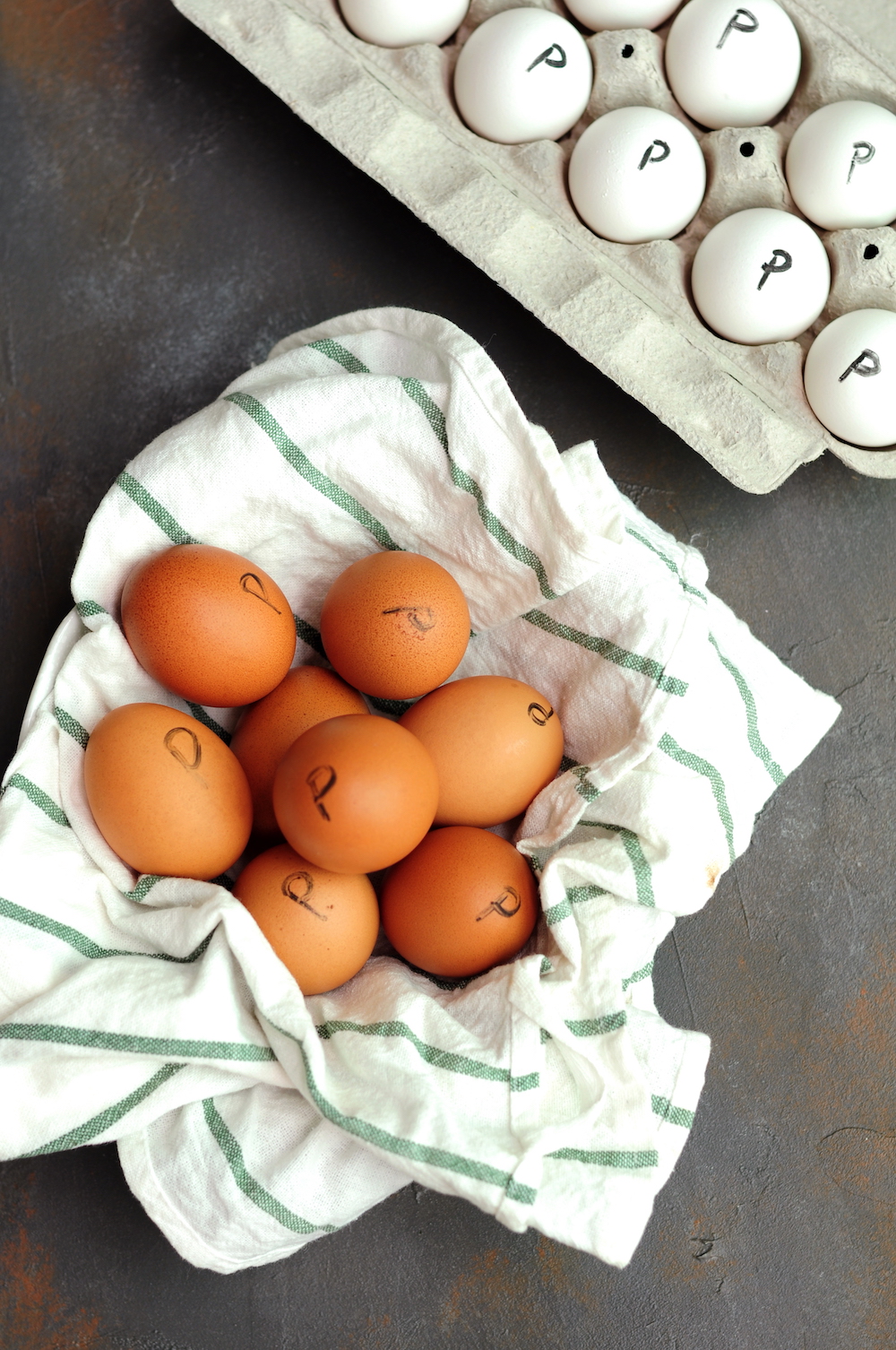
Pasteurization just means you’re “heat-treating” a certain food to a specific temperature that kills harmful bacteria.
Pasteurized eggs are identical to regular eggs, but they have been gently heated in their shells to 140°F (60°C). This temperature is high enough to kill off harmful bacteria but not hot enough to actually cook the egg.
According to the USDA Pasteurization Requirements, the temperature and holding time using heat alone to pasteurize egg whites are 134°F (56.7°C) for 3.5 minutes or 132°F (55.6°C) for 6.2 minutes. Egg white proteins are particularly heat-sensitive, requiring these lower temperatures.
Salmonella is more resistant in the yolk, but the yolk is less sensitive to higher temperatures as it affects functional properties. Thus, a higher pasteurization temperature of 140°F (60°C) is required.
Therefore, the requirements for pasteurizing whole eggs in their shell are at 140°F (60°C) for 3.5 minutes.
Pasteurizing eggs in their shells is achieved through a technique that uses precise time and temperature zones within water baths. It was nearly impossible to do this at home before. But now, thanks to sous vide, you can easily do it in just a few simple steps.
Pasteurizing Eggs Sous Vide Temperature and Time
The temperature and time to achieve fully pasteurized shell eggs using a sous vide machine is 135°F (57°C) for at least 75 minutes.
Wait… Isn’t the temperature supposed to be 140°F (60°C) to kill Salmonella?
I am glad you asked.
Remember, pasteurization, aka food safety, isn’t just about temperature, it’s also about time.
Cook’s Illustrated gave us a great example: When the center of a chicken breast reaches 165°F (74°C), virtually 100 percent of Salmonella is killed immediately. When brought to 160°F (71°C), it takes 14 seconds to kill the Salmonella. At 155°F (68°C), it takes 50 seconds. At 150°F (65.5°C), it takes 3 minutes. When you lower the temperature to 136°F (58°C), it will take 69 minutes.
So by setting the temperature at 135°F (57°C) and leaving the eggs in the water bath for at least 1 hour and 15 minutes, the Salmonella in the whole eggs is killed while the heat-sensitive proteins in the egg whites are not destroyed.
You’ll notice a difference between a raw egg and a pasteurized egg because the egg whites of a pasteurized egg are cloudy compared to the clear egg whites from a raw egg.
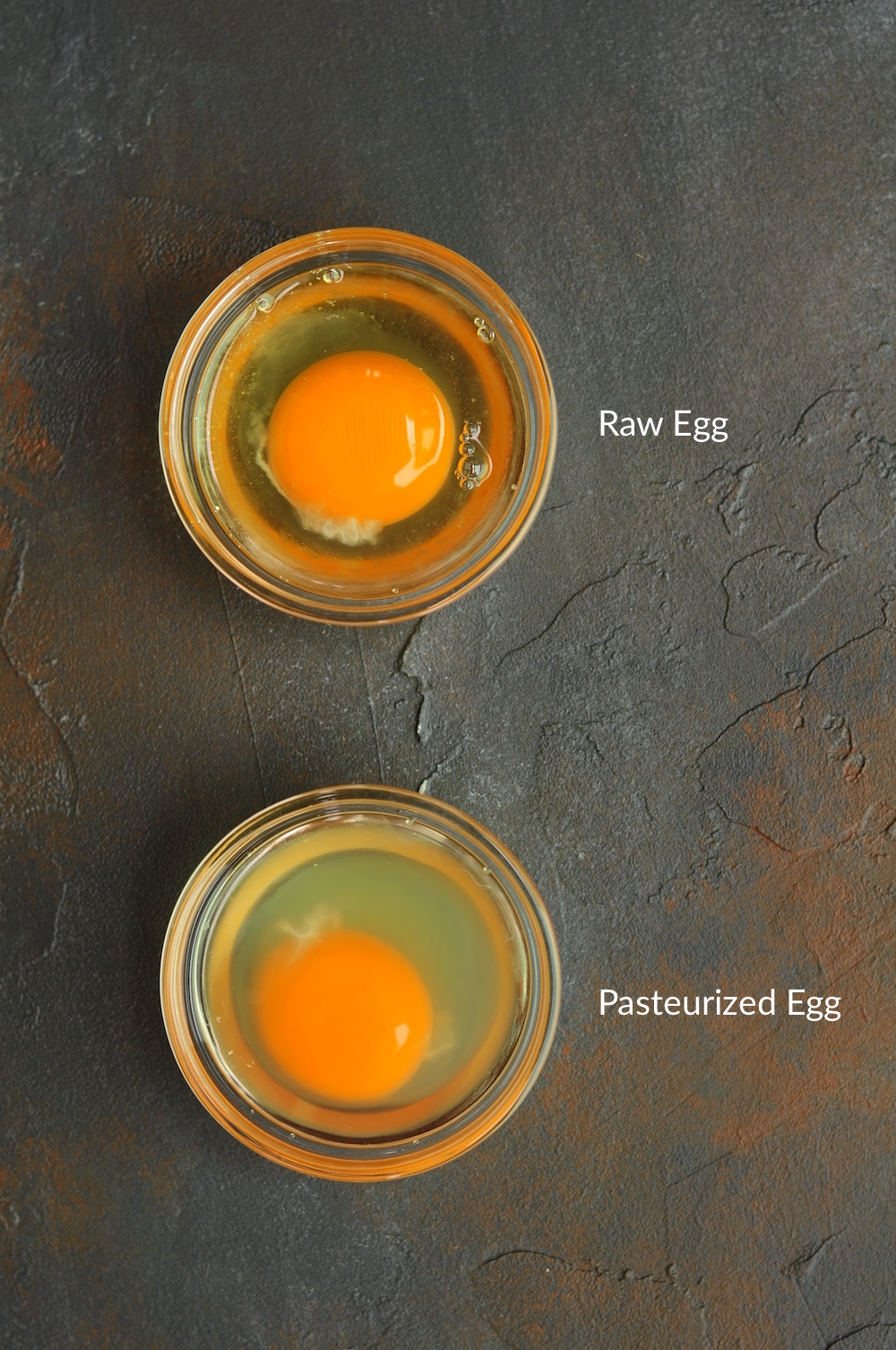
How to Pasteurize Eggs Sous Vide Step by Step
Now that you know what exactly pasteurized eggs are and why to pasteurize them at home, here are four simple steps on doing the job in your sous vide.
Step 1: Preheat water.
Preheat water to 135°F (57.2°C) using a sous vide immersion circulator. (I use Anova.)
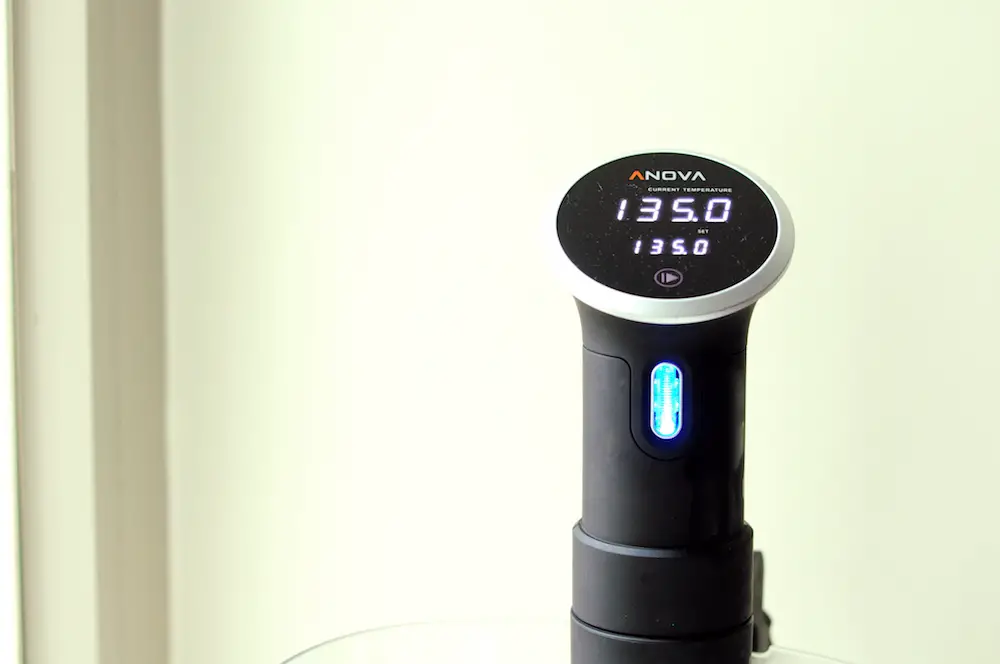
Step 2: Get eggs in the hot-water bath.
Once the water temperature is reached, use a slotted spoon or a spider strainer to gently lower a few large eggs in their shells into the water bath.
Alternatively, you could place all eggs in a plastic bag and submerge the bag under the water, allowing the water to fill the bag to keep the eggs at the bottom of your cooking vessel. (This is optional, but I prefer it because you can fish out the eggs all at once by lifting up the plastic bag later.) Set the cooking time to 75 minutes.
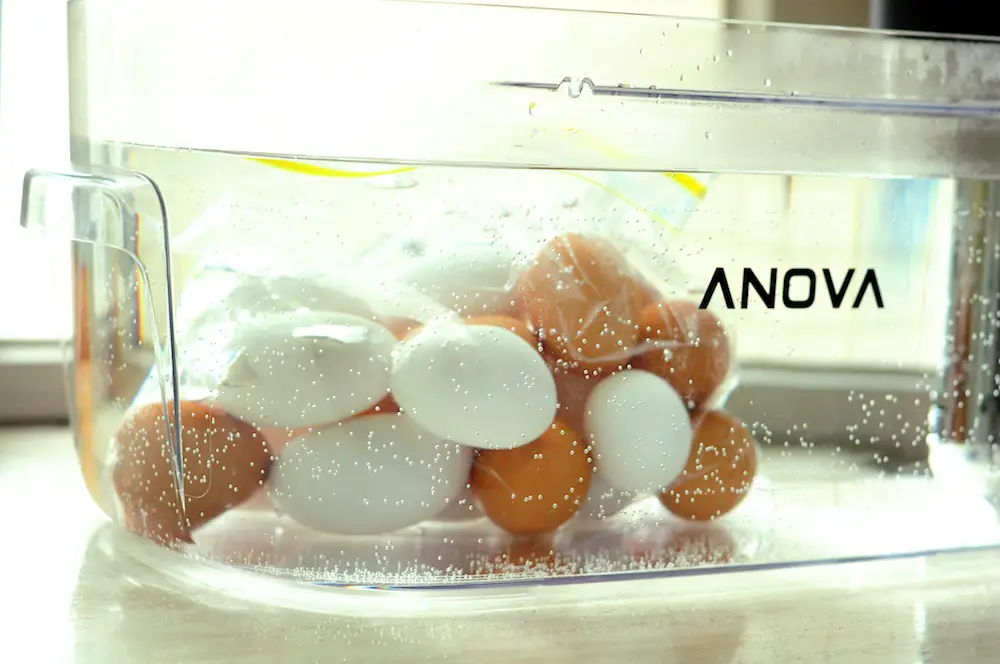
Step 3: Chill thoroughly in an ice-water bath.
A few minutes before the eggs are done, prepare an ice-water bath. Once the timer goes off, fish out the eggs from the hot-water bath and place them into the ice-water bath immediately. If your eggs are in a plastic bag, carefully lift the bag by grabbing one corner and tilt it to pour out as much hot water as possible, then drop the bag containing the pasteurized eggs into the ice bath, allowing the ice water to fill the bag so the eggs are completely submerged under the ice water. Chill for 20-30 minutes.
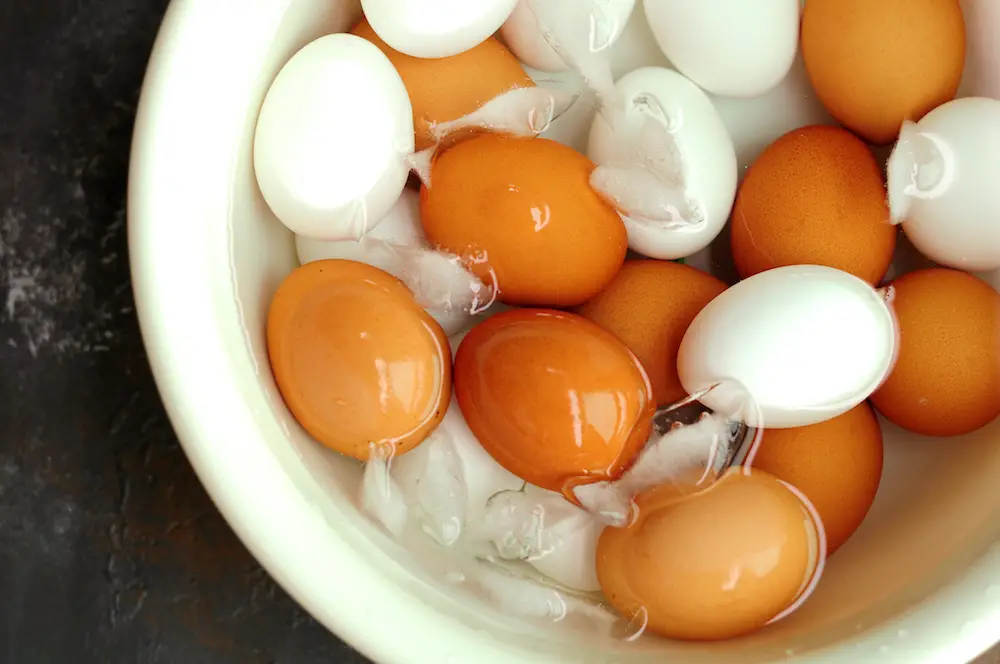
Step 4: Mark and refrigerate.
Once the pasteurized eggs are thoroughly chilled, wipe them with a dry cloth, mark them on the shells with a permanent marker, and refrigerate.
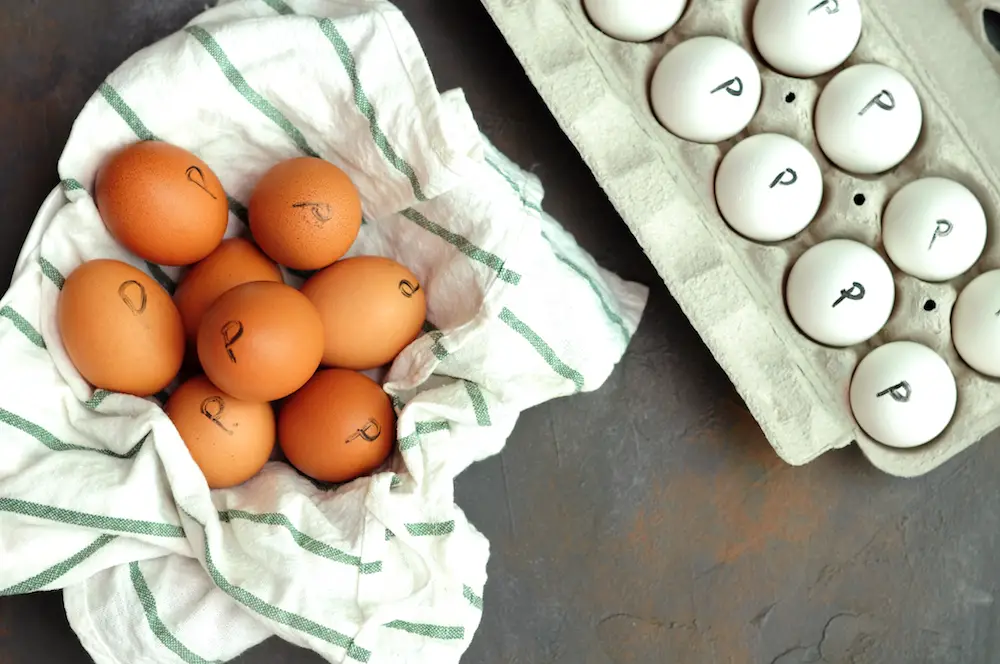
How to Use Pasteurized Eggs
When eggs are pasteurized, they can be used in any recipe that calls for partially cooked or raw eggs and spares you the health risks.
You can also use pasteurized eggs to make classic breakfast dishes that are characterized by soft, runny (and usually raw) egg yolk—like eggs Benedict or poached eggs. Since egg yolks are an incredibly rich source of choline, which helps with healthy brain development, pasteurized egg yolks are a particularly beneficial food for pregnant women and young children.
There are many delicious things you can make using pasteurized eggs. Here are a few of my top picks for inspiration:
- Classic Italian Tiramisu: This classic Italian tiramisu recipe is the perfect rich, fluffy indulgence for anyone who loves the taste of coffee.
- The Best Caesar Dressing: Caesar dressing from scratch. Only nine ingredients, loaded with garlic, parmesan, and fresh lemon juice, can be made healthier using extra olive oil instead of heavily processed or hydrogenated vegetable oil.
- Garlic Lemon Aioli: Three steps, seven ingredients, and 10 minutes are all you need to make this creamy, flavorful sauce from scratch. Serve it as a dipping sauce for sous vide potatoes or rub it all over corn on the cob for a Caribbean taste.
- Authentic Amber Moon Cocktail: A simple and classic cocktail known for being a “hangover remedy.” Made with a raw egg, whiskey or vodka, and Tabasco sauce.
- Homemade Eggnog: Both a blessing and a curse, once you try the homemade version of eggnog, you’ll never be able to drink the carton stuff again.
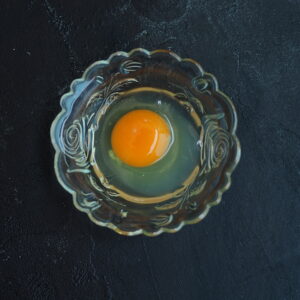
Pasteurized Eggs Sous Vide
- Prep Time: 5 minutes
- Cook Time: 75 minutes
- Total Time: 1 hour 20 minutes
- Yield: 12–20 pasteurized eggs 1x
- Category: How-tos
- Method: Sous Vide
Description
The easiest and safest way to pasteurize eggs at home.
Ingredients
- 12–20 or more large raw eggs in their shells
Instructions
- Preheat water to 135°F (57°C) using a sous vide immersion circulator. (I use Anova.)
- Once the water is ready, gently lower raw eggs in their shells into the water bath by using a slotted spoon or a spider strainer. Set the cooking time for 75 minutes.
- A few minutes before the eggs are done, prepare an ice-water bath. Once the timer goes off, fish out the eggs from the hot-water bath and place them into the ice-water bath immediately. Chill for 20-30 minutes.
- Once the pasteurized eggs are thoroughly chilled, wipe them with a dry cloth, mark them on the shells with a “P” and refrigerate.
Notes
- In-shell pasteurized eggs can last 3-5 weeks in the fridge.
About the Author
Sharon Chen is an Integrative Nutrition Health Coach and author of the Complete Sous Vide Cookbook. She believes food not only brings healing but also connection. As the creator of StreetSmart Kitchen, she aims to make meal prep easier than ever and help you find balance, ease, joy, and simplicity in the kitchen as you improve your well-being.



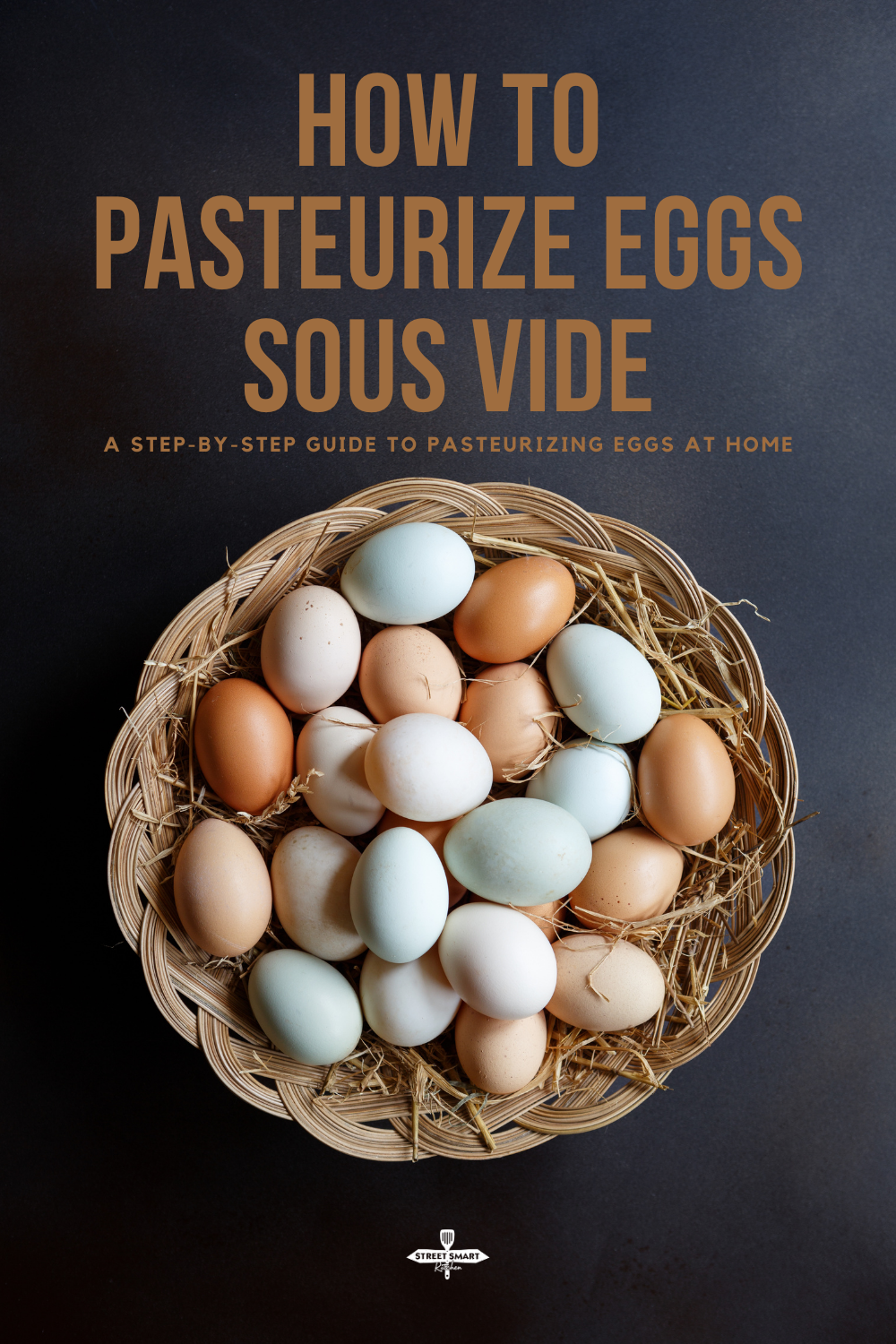
I’m confused. If I can pasteurize eggs “on the stove” at 140 -150f, and do it in 3-5 minutes, why can I not do the same thing with my Sous Vide at 135 – 150f?
First, apologies this is not an answer. However, I have the exact same question as Lee and am surprised there has been no answer to it. It is a logical question, i.e., why 75 minutes at 135 degrees with sous vide immersion controller but only 3-5 minutes on top of stove maintaining a 140-142 degree temp? It doesn’t make sense…
I want to freeze dry raw eggs but pasteurize them first so that there’s no risk of contaminating my freeze dryer. Eggs, though, freeze dry better if they’ve been mixed in a blender first so that the yolks and whites are thoroughly blended.
I’m wondering if I could pasteurize the eggs after I have blended them, instead of pasteurizing the intact eggs, by placing a sealed bag of blended eggs into the sous vide?
Hi Irwin, thank you for your comment. It’s a very good question which I don’t know the answer at the moment. On top of my head, I don’t see why not but I will do some research and see if I can find more information about pasteurizing blended eggs. Just curious – how do you plan on store them? The whole bag in the freezer?
I hope this isn’t an ignorant question but here goes….If I pasteurize some eggs and keep them in the fridge to use in recipes, could I use a few of those same eggs and make hard cooked out of some of them if we wanted to make egg salad? They obviously would have to cooked again at whatever method one would use to hard cook eggs (we use the steam method).
Hi Mike, thanks for your question. Yes, absolutely. You can use sous vide pasteurized eggs just like normal eggs for cooking. 🙂
The USDA makes a point that you should not put the pasteurized eggs back in their original egg container from the store or you have a high risk of re contaminating the eggs.
I made this recipe a few days ago to make mayo and just to have them to see how they cook and bake. I usually have an egg every morning. Mostly sunny side up, but occasionally make a fried egg sandwich. The pasteurized sunny side up egg – the albumen (egg white} had a slightly different texture, in the pan an on the plate. In the pan the inner albumen seems more dense/tight, while the outer albumen seems more runnier. The yolk seems to cook a bit quicker than non-pasteurized. But overall, still a good fried egg.
I made an olive oil cake that i’ve made many times before. Baking with pasteurized eggs did not reveal any differences from previous bakes.
Mayo! Using ‘Serious Eats’ Two-minute Mayo technique – stick blender in jar just slightly bigger than blender head – mixed up a righteous mayo in moments, with little worry of mayo breaking.
Thank you for a great primer on pasteurizing eggs. Much appreciated!!
Thanks for this. I want to pasteurize some eggs for making mayonnaise that it will last longer than a few days in the fridge. I’ve read elsewhere that mayo made with pasteurized eggs will keep for up to a month in the fridge-not that any mayo that I make will ever last that long!
Pingback: Drinking Raw Eggs Might Not Be So Bad | Conservative News Daily™
Very helpful guide. Two quick notes: first, the word “Hamburger” (in the comprehensive guide) is misspelled as “Hamburguer.” Second, under “Fruit” that is cooked to 145 degrees F, it says “Cooked to soft (f.e. for purees)” Did you perhaps mean to write “i.e.” ?
Again, a very helpful guide — many thanks.
If you put your eggs in a mesh bag, you will get excellent heat transfer, and they will drain when you lift them out. You can easily transfer them to a water bath all at the same time. Synthetic (polyester/nylon) mesh bags are cheap, reusable, have multiple uses, and can be found online (search “brewing bag”) or at homebrew shops.
What a fantastic idea of using a mesh bag. Thanks so much for the tip, John!
I followed the sous vide 135 degree/75 minute method with large eggs and the yolk was cooked. What did I do wrong?
Hi Louise, sorry to hear that. Did you put the eggs immediately into an ice water bath after cooking?
I pasteurized at 57 deg. C, according to your recipe, but the process spoiled the egg whites: they became unwhippable in mixer. Then I tried at 55 C, and it was OK with the whites, but I am not sure they where fully pasteurized during 1 hour and 15 minutes. I guess I have to increase the time accordingly, but I don’t now by how much. Can you give a good time estimate for 55 deg. C?
Solid recipe – made it exactly as described and eggs turned out exactly as on your picture – cloudy whites and regular looking yolk.
I wonder if I can achieve the same result in shorter time by using sous vide at 140 F for 3.5min?
Can eggs go in right from the refrigerator or do they need to be room temperature first?
Yes, they can. That’s what I do. I don’t think the eggs need to be at room temperature first. You could leave them in the sous vide for a little longer.
I had this same exact issue. My eggs were hard boiled when I removed them. I did an ice bath immediately and then refrigerated them overnight.
If you forget about them and leave them for three hours are they still fine ? What about an ice cream mixture of egg yolks, cream, and sugar ? Still 135 and 75+ minutes ?
Were you referring to leaving the eggs in the water bath at 135F for 3 hours? If so, they should be fine. For sous vide ice cream mixture, you will need to cook it at 180F for 1 hour.
Appreciate the recipe. There is a typo in the following sentence., “(57°F)” should be “(57°C)” It is correct in in the printable version of the recipe.
So by setting the temperature at 135°F (57°F) and leaving the eggs in the water bath for at least 1 hour and 15 minutes, the Salmonella in the whole eggs is killed while the heat-sensitive proteins in the egg whites are not destroyed.
Thank you for pointing out the typo. It’s fixed!
Appreciate your comment, J!
What awesome tips! I just got my sous vide cooker a couple weeks ago and having been making everything I possible can with it. Definitely going to try this!
Wow so much info here about eggs that I didn’t know about. I love them as they are so filling and this is great to see a different take on a fried or scrambled egg!
This is such an elaborate post on the topic. Great work indeed.
interesting, how long can you store these eggs for?
Up to 5 weeks in the fridge.